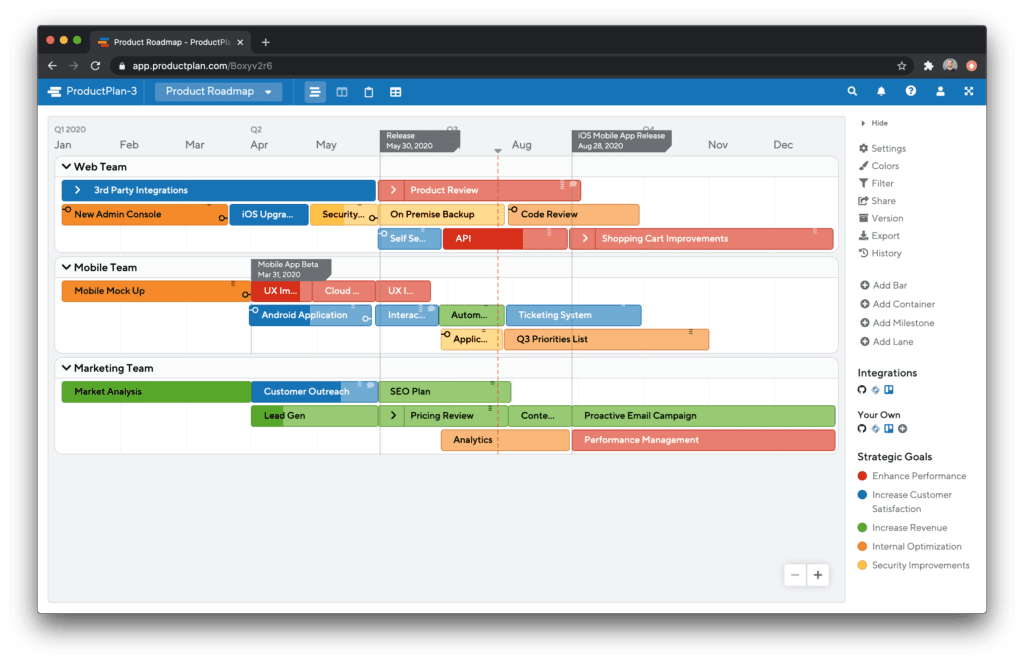You’ve probably had the experience of attending or leading strategy meetings early in your product’s journey where the team was bursting with innovative ideas — ideas that could lead to a truly awesome product. But no matter how exciting or groundbreaking these ideas were, you probably also found them pushed to the bottom of the list once development officially got underway.
After all, your company had limited time and resources to deliver a market-ready product that checked all of the important boxes. You had to deliver the items your customers said they wanted. You had to fix all defects. You had to include everything your industry’s analysts and tastemakers insisted belonged in such a product. And you had to make sure you were matching the functionality of your competitors. With all of those must-have items demanding a place on your product roadmap, customer delight was likely deemed a nice-to-have — and shelved for later.
But in most cases, we believe this strategy of de-prioritizing customer delight can be a costly mistake for your product’s success. Indeed, we believe customer delight itself is a must-have on any product roadmap. Here are two reasons for this.
1. With lowered (or nonexistent) barriers to entry, you can’t afford to offer a me-too product.
If you’re developing a product for which your company holds the patent and all intellectual property rights — in other words, if you maintain something approaching a monopoly on that product — then perhaps customer delight isn’t very important for your success. But we’re assuming you don’t offer such a product.
If you sell a software product, of course, you have competitors. And because the barriers to entry have fallen so low for so many products and services, you probably have many competitors. Or you will.
This means, of course, that if you’re offering a me-too product — a product completely lacking unique benefits, a coolness factor, something that makes your user’s day, or some other form of customer delight — then you’ll likely be forced to compete on price. And in the race to the bottom of a price war, everybody loses — including your customer.
2. Customer delight provides its company outsized benefits — because it connects emotionally with the customer, not merely on a rational level.
A study reported in the Harvard Business Review found that on a lifetime value basis, “emotionally connected” customers are more than twice as valuable to a company as “highly satisfied customers.” The study quantified this increased value of emotionally connected customers using the following metrics:
- They will buy more of your products and services
- They are less price-sensitive
- They will pay closer attention to your communications
- They are more likely to follow your advice
- They are more likely to recommend your products and services
In other words, when you deliver what your customers say they want — when you satisfy them, even “highly satisfy” them — you will still realize less than half of the potential lifetime value from those customers than you would if your product were able to connect with them on a positive emotional level — to “delight” them.
Tweet This:
“Emotionally connected customers are more than twice as valuable to a company as highly satisfied customers.”
When you do delight your customers, you can enjoy higher margins, more repeat business, more upsell and cross-sell opportunities, and even more and better referrals from your user base.
This is why customer delight needs to be an integral part of your product strategy — not merely a sundae on top of the meatball.
Customer Delight Cannot be an Afterthought in Your Product’s Development
Author Seth Godin, in his book Meatball Sundae, describes the new phenomenon of stable, old-fashioned organizations urgently slapping new-media campaigns on top of their traditional business infrastructure. A 100-year-old maker of household appliances, for example, may spend a small fortune on quickly establishing a corporate presence on Facebook, or on paying a team of writers to whip up a zillion blog posts in a hurry.
The problem with this strategy, of course, is that the two don’t mix. The company makes meatballs — dependable, perhaps even boring products — but wants to jump on the latest media bandwagon to capitalize on trends.
Such a company, Godin argues, would be better off either reimagining its entire organization as a sundae from top to bottom — applying new-business thinking and moving away from its hierarchical and bureaucratic processes — or by simply embracing its meatball-ness and developing marketing and media campaigns that are authentic meatballs themselves.
This meatball sundae metaphor gives us a useful parallel for customer delight. If your product is a predictable, me-too offering, you can’t think of customer delight as a single-serving afterthought. You’ll either want to embrace your product’s me-tooness, and sell it on price, or you’ll want to build customer delight into the product as much as you can. We’ll assume you’d prefer the latter.
How can you build customer delight into your product?
Okay, so how do you do that? How can you increase the odds that every product you bring to market will have those customer delight components — those things that, as the Harvard Business Review puts it, “emotionally connect” with your customers in a positive way?
Here are our suggestions.
1. Achieving customer delight requires first that you truly understand your user personas, their pain points and their desires.
Let’s say your company makes software tools that real estate appraisers use to generate their property appraisal reports. How will you build customer delight into a new release of your application?
It’s not like you’re developing Snapchat or another hot new social media app. We’re talking about a software platform for real estate apprais… zzzzzz.
The first thing you need to do is figure out what drives your customers. What do they want? What are they trying to avoid in their day-to-day work? What would make their jobs easier?
If you truly got to know your appraiser customers, you would learn that one of the tasks they dread most is copying all of the public-records detail into the report for the property they’re appraising. This is extremely tedious and boring, and it can be so time-consuming for slow typists (which a lot of appraisers are) that some actually pay to subcontract out this part of their report writing.
Armed with that knowledge, let’s say you build into your new appraisal report application a tool that allows the appraiser to tap directly into the public-records databases — and with a single click pull in all of that data. Now that’s customer delight!
And you arrived at this idea all because you took the time to learn about your user persona — what they want and what they dread.
2. Customer delight needs a permanent spot on your product roadmap.
Now, assuming you’re sold on the idea of building customer delight into your development process — right alongside all of the must-have features and fixes — another important strategy for ensuring it stays top of mind is to give customer delight its own spot on your product roadmap.
Tweet This:
“Customer delight needs a permanent spot on your product roadmap.”
You can create a Customer Delight epic or theme and place it on the roadmap, with its own features or stories. Continuing with our appraisal software example, you might include under Customer Delight your “One-Click Auto-Populate Property Data from Public Records DB.”
Under this same epic, you might also include other customer delight ideas, such as “Auto Crop Photos to Report Dimensions.” (Another frustrating element of building the appraisal report, real estate appraisers will tell you, is resizing the photos they’ve taken in the field to fit the report’s required dimensions. Imagine how delighted they’ll be when they realize your app has simplified this tedious process down to a single click as well.)

Maintaining a Customer Delight slot on your roadmap for you and your colleagues to see will also serve to keep this all-important strategic objective top of mind for you. You will train yourselves to see delighting your customer as integral to your overall product development, just like other epics such as Security or APIs or First Time User Experience.




